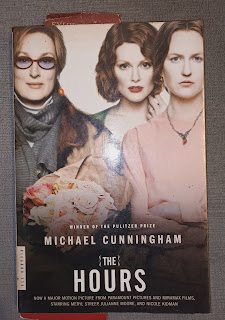Filipino freedom is one of the
by-words in the June month-long celebration of Jose Rizal (June 19,
1861 – December 30, 1896), his legacy to the Filipino race. In the quote
below is a gentle rebuke to the Filipino malaise that has not found its cure to
this day – a lack of true nationalism – a love for this country, the
Philippines. A side look at this quote gives away some insights on the
present state of the nation.
|
|
“As long as the Filipino people have not enough
spirit to proclaim, brow held high, and breast bared, their right to a free
society, and to maintain it with their sacrifices, with their very blood; as
long as we see our country men privately ashamed , hearing the cries of their
revolted, and protesting in conscience but silent in public, or joining the
oppressor in mocking the oppressed; as long as we see them wrapping
themselves up in their selfishness and praising the most iniquitous acts with
forced smiles, begging with their eyes for a share of the booty, why give
them freedom?” – El Filibusterismo
|
Think About What Rizal Wrote
"As
long as the Filipino people have not enough spirit to proclaim, brow held high,
and breast bared, their right to a free society...
Two
people power revolutions later, note how many student's hands inside a
classroom will go up when a teacher asks, “Who likes to go abroad to work [and
reside there permanently]?” Are there still many remaining Filipinos out there
who will choose to stay put in this land and not become another country’s
citizen? How many Pinoys, when faced with a direct challenge from another
culture will insist on their Filipino-ness and defend it against another
nation’s impositions?
Or to put
it another way, how many have embraced another way of life merely because it’s
not Filipino or because it’s not “local?” Have we truly set ourselves free
after getting rid of the major oppressors (Spain: 1521-1898; USA: 1900 – 1960
and onwards; Japan: 1942-1945; Marcos: 1972-1986) when other more subtle
invasions brainwash our cultural mindset?
and to maintain it with their sacrifices,
We
declare the OFWs as heroes who have sacrificed greatly. But are most of their
sacrifices for the good of the country? Should this question be asked or is it
assumed that everybody who goes abroad and has his or her family in mind will
eventually give back to his homeland?
with their very blood;
After
the first quarter storm in the early seventies, this
generation has yet to see another of this kind of sacrifice, in the truest
revolutionary sense.
as long as we see our country men privately ashamed,
Filipinos
take pride in the professionals out there in other countries who are truly
making their marks. But in most households in developed nations, a great number
of Filipino workers belong to the lowest rank, and they are numbered among the
more exploited laborers in the world.
Back
home, a nurse has to pay a hospital in order to have practice and experience
after she passes the board exam. A teacher earns only enough to pay rent. A
policeman has to augment his income through other irregular means.
hearing the cries of their revolted
How
extensive has been the documentation of the sufferings of the OFWs? Mostly, the
noise is about successes. In fact any kind of international success is a
palliative to the ailing Filipino morale: So Hail Manny Paquiao! Cheers for
Charise! Loud applause for the Filipino Indie Filmmakers winning festivals
abroad!
and protesting in conscience but silent in public,
Many
people end up merely smirking at dead-end-win-some-lose-more deals reached by
prosecutors of corruption. Cynicism prevents the citizens, especially the young
people, from getting involved – at least in pronouncing their anger
collectively and shaming the shameless propagators of bad governance.
or joining the oppressor in mocking the oppressed;
The
influential who have the means to initiate change mostly play safe and just go
through the motions. To preserve their vested interests, some hack away at
every deal they could muster; the underpaid, the marginalized, the naive, the
vulnerable, the ignorant be damned. Those who are in charge of basic
services are at their wits end in solving crisis-after-crisis, but nobody
notices their gargantuan efforts since grand scale corruption drowns all their
efforts like a Tsunami.
as long as we see them wrapping themselves up in their selfishness
The ZTE
scandal, the Jocjoc-Agri under the table deal, the PCSO foul plays, the
GrandScale Landlordisms, the PIATCO scam, the unresolved murders of progressive
journalists and social workers, the endless grandstanding in the house of
representatives... and the list goes on....
and praising the most iniquitous acts with forced smiles,
Justice
should always prevail but most of the time, the guardians drop their weapons
and serve their pockets. They shrug their shoulders at “isolated
irregularities” saying nothing ‘major, major’ has been happening and everything
is all right. Hopefully greed will stop running amok on the streets.
begging with their eyes for a share of the booty,
When is
freedom truly free?
why give them freedom?”



